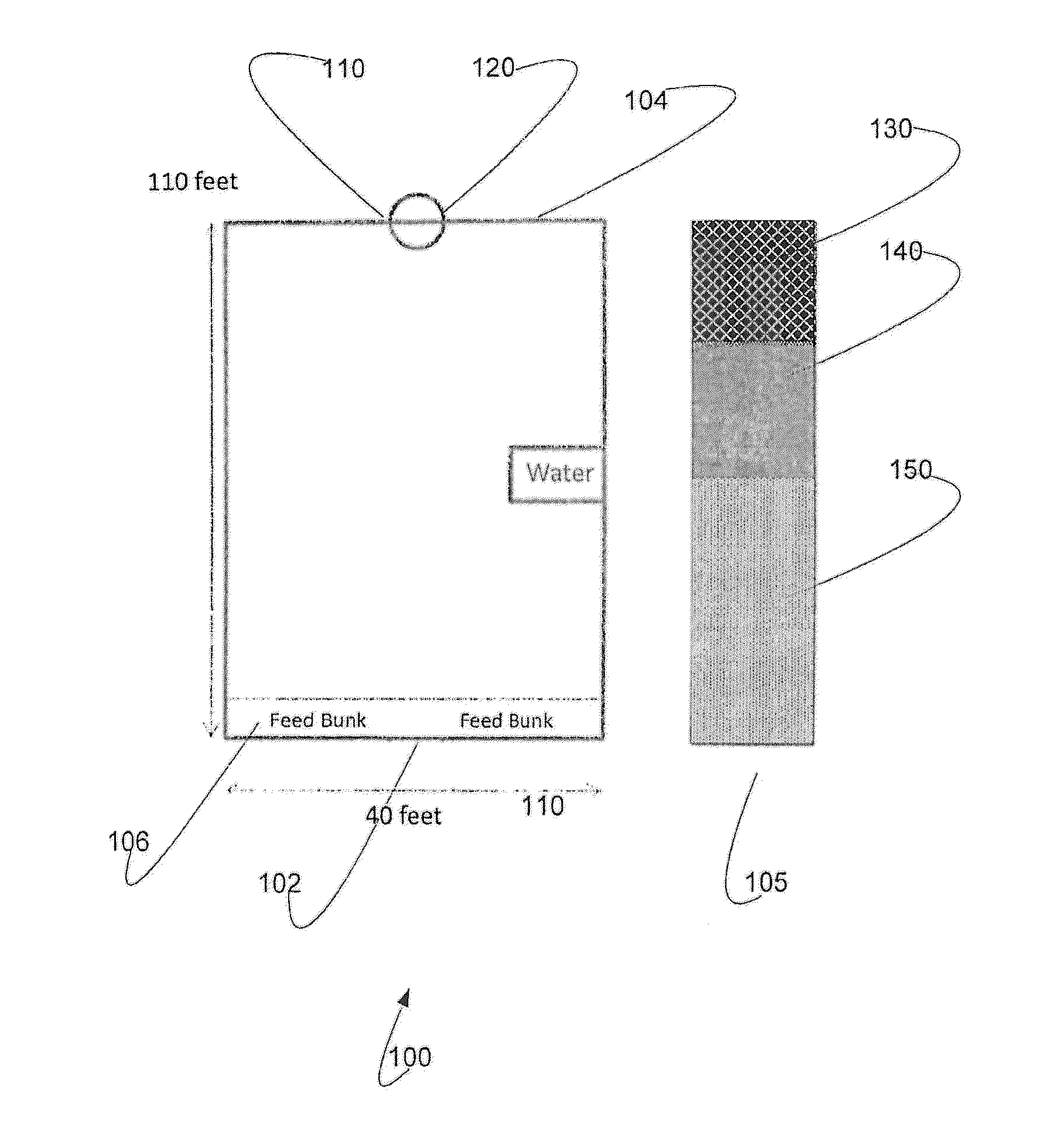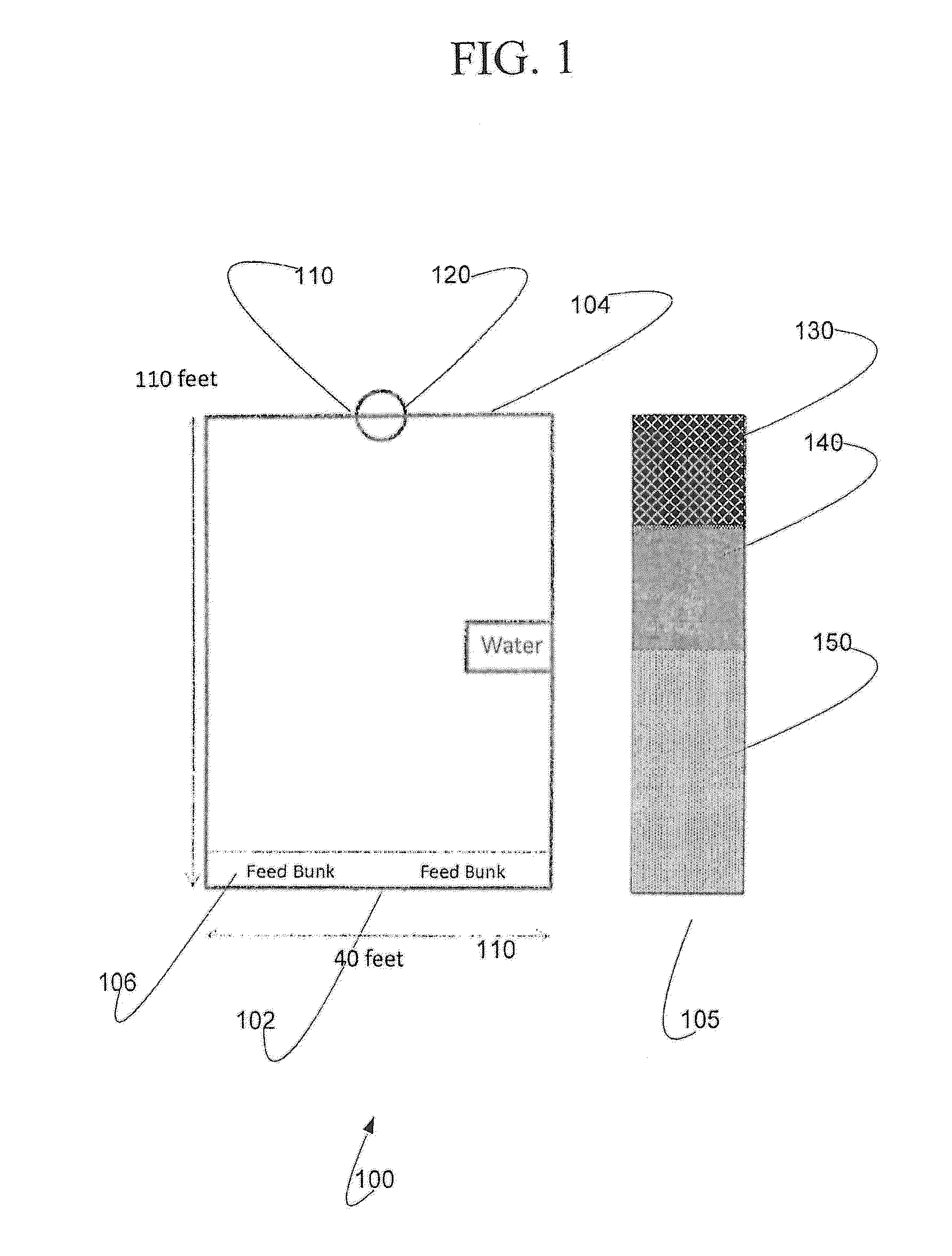Apparatus and method to identify morbid animals
a technology for morbid animals and apparatus, applied in the field of morbid animals identification, can solve the problems of difficult detection of sick animals, poor performance of morbid animals (average daily gain and feed conversion), and difficult detection of morbid animals in commercial feedyards
- Summary
- Abstract
- Description
- Claims
- Application Information
AI Technical Summary
Benefits of technology
Problems solved by technology
Method used
Image
Examples
example 1
[0085]Twenty (20) heifers were enclosed in pens 33 and 34. None were proactively given medical treatment prior to being placed in the feedlot pens. Rather, the animals were only treated as needed per visual inspection. Some were treated prior to being put in pens as they were morbid as received; these pre-pen treatments were not included in this table.
[0086]BLE data was run blind to the feedlot team making visual inspections and only shared with that feedlot team after they had completed their evaluations. BLE data suggested some heifers were ill enough to have their eating habits changed but recovered without treatment.
[0087]BLE data had technical interruptions (a day with no recorded data) which may have resulted in NOT identifying more morbid heifers. Note: visual inspection quality was thought to be above normal due to skills of this feedlot team and small pen population (10 versus normal 200-300). Note: “too sick to pull” means the heifer was treated in the pen as it was too we...
PUM
 Login to View More
Login to View More Abstract
Description
Claims
Application Information
 Login to View More
Login to View More - R&D
- Intellectual Property
- Life Sciences
- Materials
- Tech Scout
- Unparalleled Data Quality
- Higher Quality Content
- 60% Fewer Hallucinations
Browse by: Latest US Patents, China's latest patents, Technical Efficacy Thesaurus, Application Domain, Technology Topic, Popular Technical Reports.
© 2025 PatSnap. All rights reserved.Legal|Privacy policy|Modern Slavery Act Transparency Statement|Sitemap|About US| Contact US: help@patsnap.com



